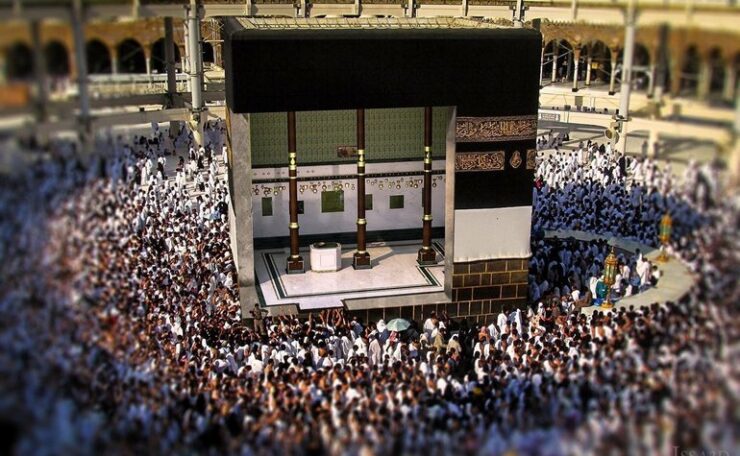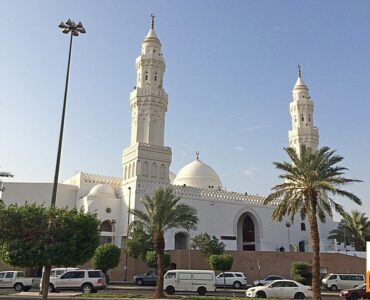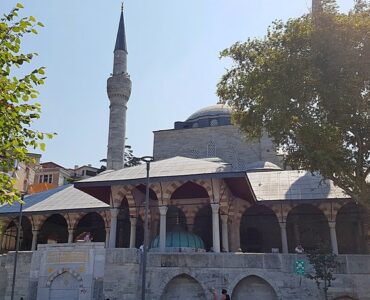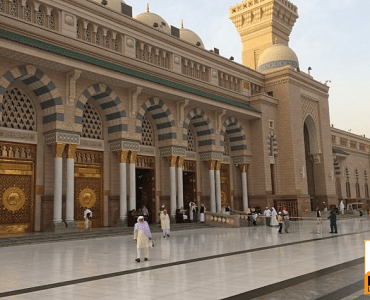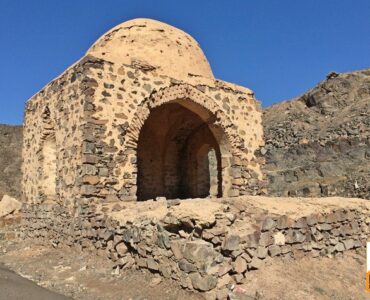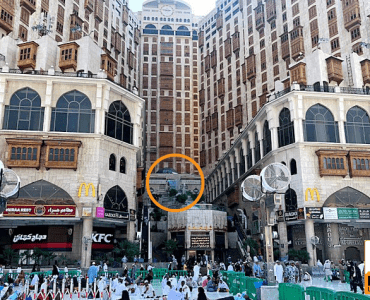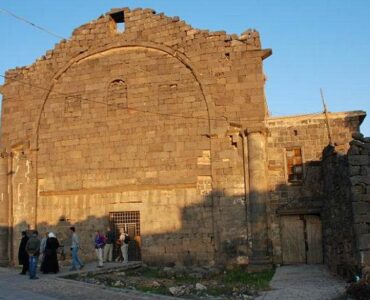The diagram above shows a rare view of what the inside of the Ka’bah looks like. The construction made by Ebrahim (عليه السلام) contained no roof, it was the Quraysh who raised the walls of the Ka’bah and added a roof. Today, only a privileged few have had the opportunity to step inside the Ka’bah.
The Ka’bah during the time of the Quraysh
- At the time of the Qurash the Ka’bah had two doors at ground level, one on the eastern side, the other on the west. People would come and deposit their valuables inside the Ka’bah. Up until that point, the Ka’bah did not have a roof.
- The Quraysh rebuilt the Ka’bah about five years before the Prophet (ﷺ) commenced his Prophethood. They closed the western door and raised the eastern one in order to better control who entered inside. They also made a roof for the first time. The Prophet (ﷺ) helped in the construction.
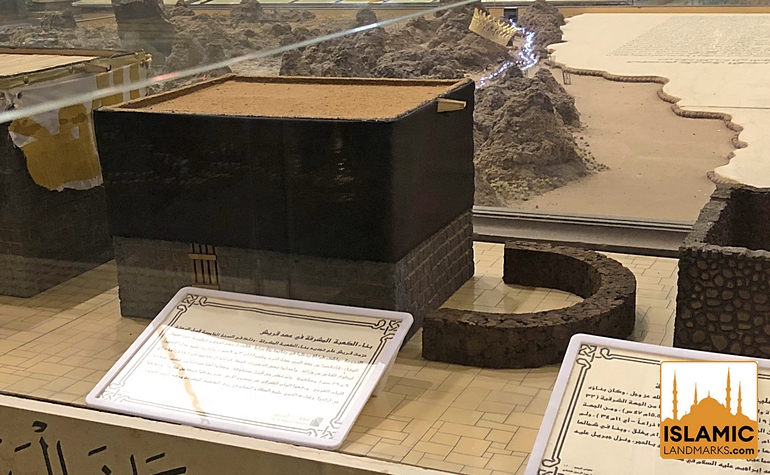

- The Quraysh had erected their chief idol, Hubal, within the centre of Ka’bah. It was made of red carnelian and shaped like a human with the right hand broken which the Quraysh had replaced with gold. In front of the idol were seven arrows of fate and when the pagan Arabs were undecided on a matter they would go to Hubal and throw the arrows in front of him and took ‘advice’ based on how the arrows appeared.
Incident in the time of Jahiliyyah
- During the period of Jahiliyyah (Ignorance), a man and woman from the Yemenite tribe of Jurhum called Isaf and Na’ilah committed adultery inside the Ka’bah. Allah (ﷻ) turned them into stones. When they were found the next day, they were carried outside and were set up at the Ka’bah as a warning. Over time these two stones were worshipped along with the other idols. One of the stones was placed right next to the Ka’bah; the other one was set up at the spring of Zamzam. Finally, the Quraysh ordered that the stone next to the Ka’bah to be carried to the other one at Zamzam. From then on, people slaughtered their sacrificial animals at that spot.
Declaration of the boycott of the Muslims was hung inside the Ka’bah
- When Islam began to spread, the Quraysh became more embittered and could not tolerate the Prophet (ﷺ) any longer. The chiefs drew up a document which called for the social and economic boycott of the Prophet (ﷺ) and all those who supported him and his family. All of them signed this document on 1st Muharram of the seventh year of the Prophethood and the scroll was hung up inside the Ka’bah to give it full sanctity.
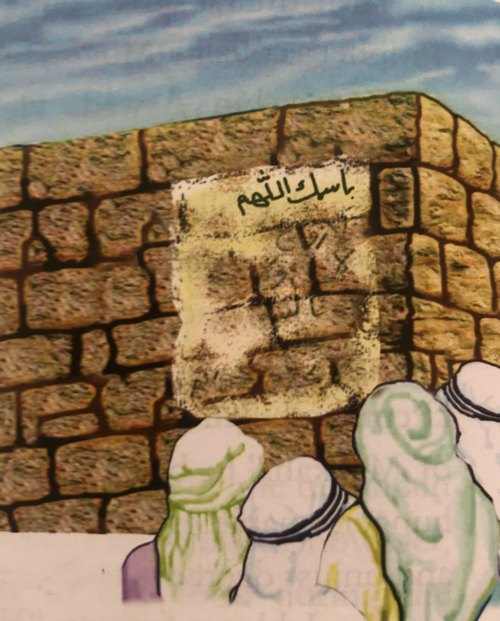

- For three long years the Prophet (ﷺ) and his kinsmen were ostracised in the She’eb Abi Talib, a narrow valley in Makkah. Food was so scarce that they had to resort to eating leaves of trees and their children’s cries could be heard all over the valley. At last by the Grace of Allah, the scroll was eaten up by white ants save for the name of Allah and the boycott was uplifted.
The Prophet (ﷺ) goes inside the Ka’bah in the conquest of Makkah
- When the Prophet (ﷺ) arrived in Makkah on the day of victory, he made tawaf around the Ka’bah seven times and touched the Hajar al-Aswad with his staff. He then had the door of the Ka’bah opened and went inside. Accompanying him were Usama bin Zaid and Bilal (رضي الله عنهم). He (ﷺ) closed the door, performed prayer and stayed for some time.
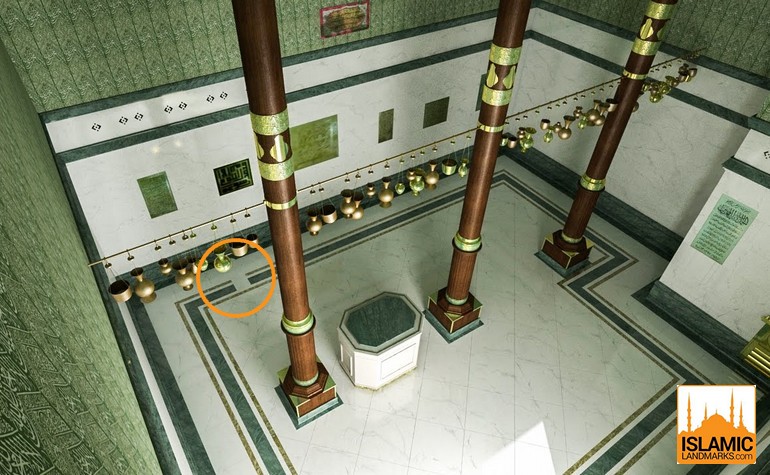

- Inside the Ka’bah were statues of Ebrahim (عليه السلام) and Ismail (عليه السلام), along with pictures of angels and a picture of Ebrahim (عليه السلام) with divining arrows in his hand. It has also been reported that there was an icon painting of the Virgin Mary and the child Christ which had been done by a Christian. The Prophet (ﷺ) ordered all of them to be destroyed.
- The Prophet (ﷺ) also had the ‘chief’ idol Hubal destroyed as well as all the other idols surrounding the Ka’bah.
Renovations throughout history
- The interior of the Ka’bah has been maintained by different rulers throughout history. Abdullah bin Zubair (رضي الله عنه) added the three support pillars we see inside.
- Along the walls of the Ka’bah are plaques commemorating the work done on the Ka’bah by different rulers.
The inside of the Ka’bah today
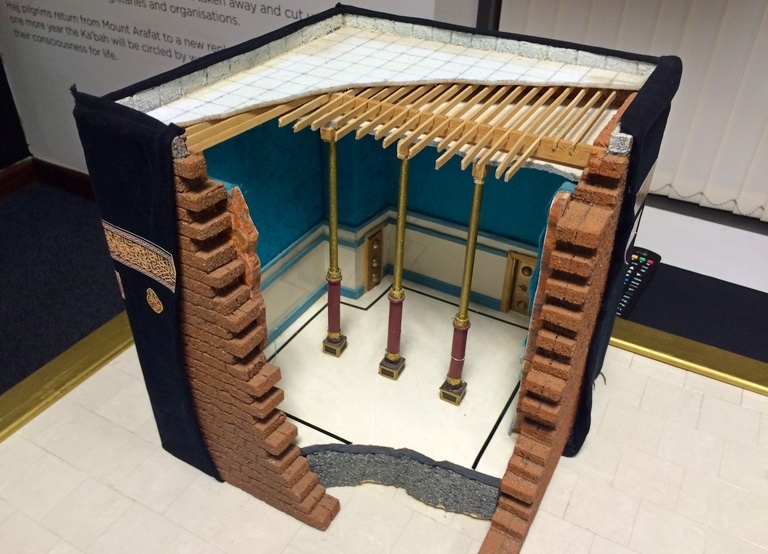

- In 1995 an extensive renovation of the Ka’bah took place during the reign of King Fahd. As well as cleaning the external brickwork a complete restoration of the interior was undertaken.
- New marble was laid on the floor and walls, the three pillars from the time of Abdullah bin Zubair (رضي الله عنه) were replaced and a new green coloured cloth was laid on the walls and ceiling.
- This view of the interior shows the three pillars and the golden ‘Bab ut-Taubah’ (Door of Repentance) on the right. This door opens to the stairway leading to the roof of the Ka’bah.
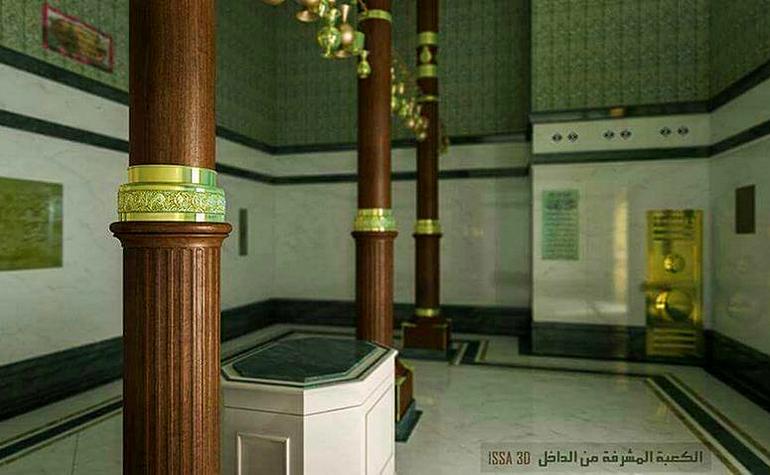

- This white cupboard is where various scents and gifts are kept within the Ka’bah. Bakhoor (fragrance) is placed on here.
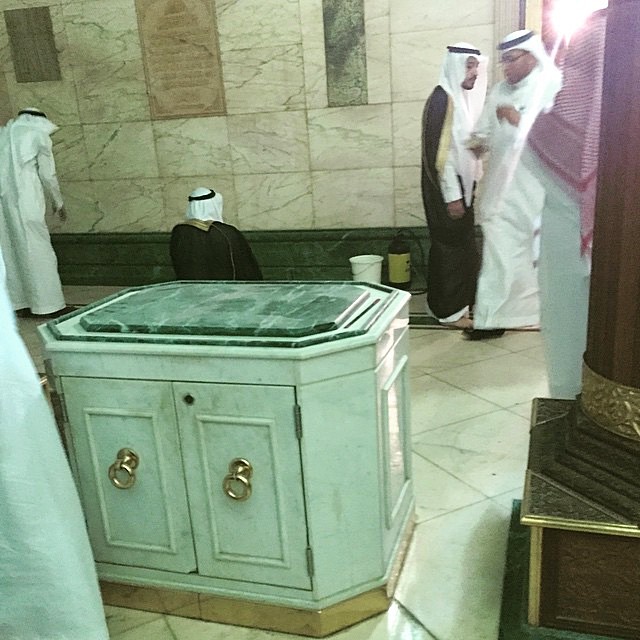

- The ceiling of the Ka’bah is covered in the same green material as the upper parts of the walls.
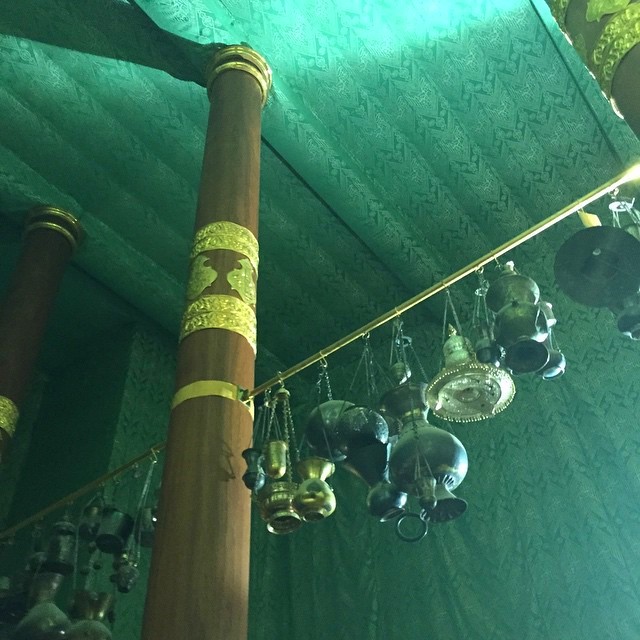

- There are plaques along the walls commemorating the various rulers who have renovated the Ka’bah throughout history.
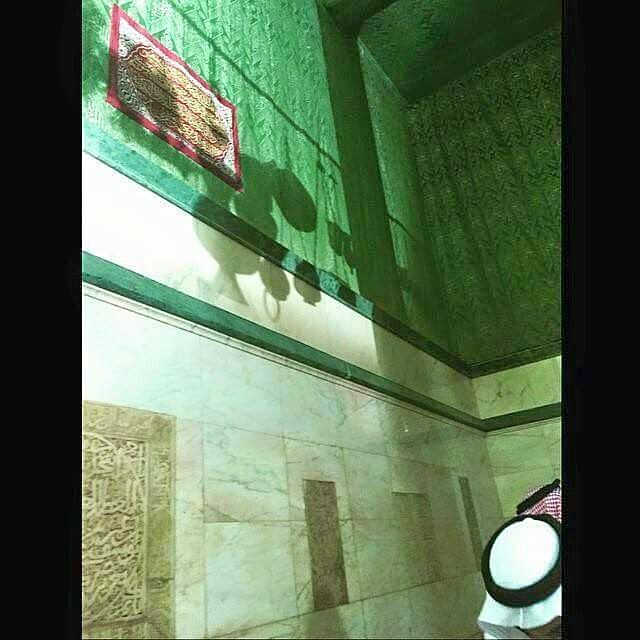

Other interesting facts about the inside of the Ka’bah
- The two horns of the ram which Ebrahim (عليه السلام) slaughtered were hung inside the Holy Ka’bah. When Abdullah bin Zubair (رضي الله عنه) demolished the Ka’bah to rebuild it, he found the horns had disintegrated due to previous damage and age.
- Hadhrat Khaarija bin Mus’ab (رحمه الله) narrates that four people completed the Quran inside the Kaaba in a single rak’at. [1] Hadrat Uthmaan (رضي الله عنه) [2] Hadhrat Tamim Daari (رضي الله عنه) [3] Hadhrat Sa’eed bin Jubayr (رضي الله عنه) [4] Imam Abu Hanifa (رحمه الله).
References: Kabahinfo.com, Symbols of Islam – Tanja Al-Hariri-Wendel, Muhammed the last Prophet – Sayyed Abul Hasan Ali Nadwi, When the Moon Split – Safiur Rahman Mubarakpuri, Muhammad – Martin Lings, Astonishing Facts about The Qur’an – Mufti AH Elias

